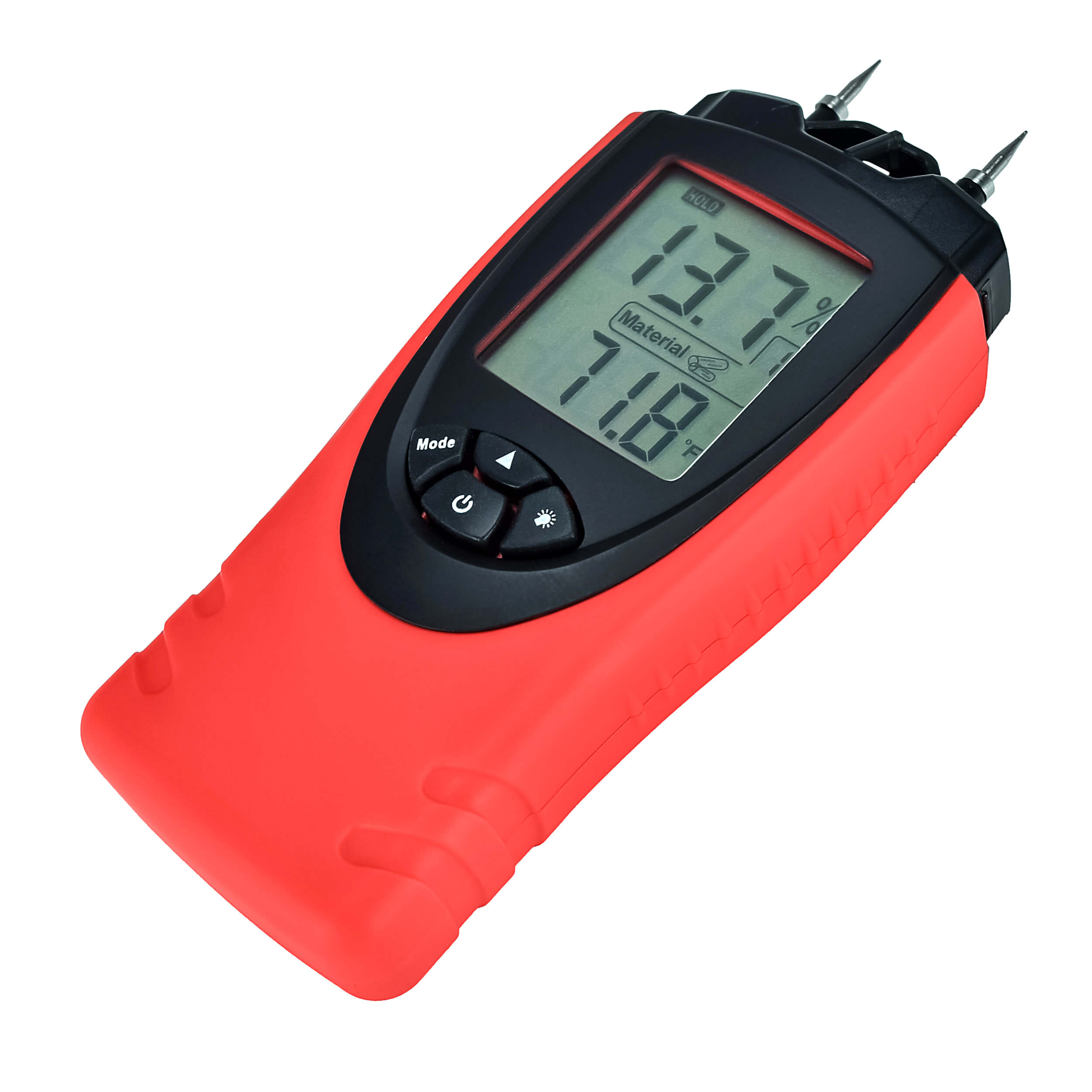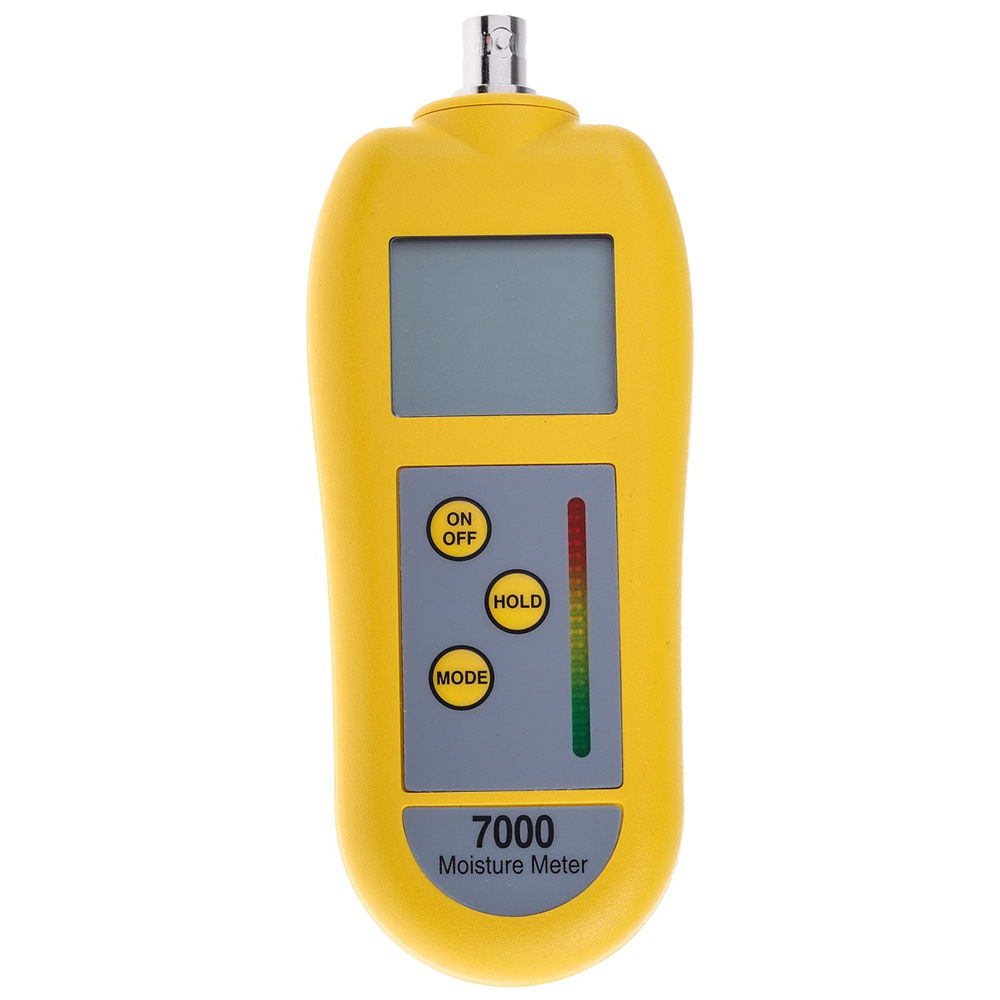Look Into the World of Wetness Meters: Every Little Thing You Need to Know
In the realm of dampness meters lies a world of precision and usefulness that typically goes undetected. These tools, while apparently straightforward, hold a wealth of information that can substantially affect numerous markets and applications. Comprehending just how moisture meters operate, the different kinds offered, and their varied usages can clarify their value in making certain quality and performance. By discovering the intricacies of dampness meters, one can reveal a useful tool that transcends plain dimension, using insights that can make a substantial distinction in countless areas.
Exactly How Moisture Meters Job
Moisture meters run by determining the electrical conductivity or capacitance of products to identify the moisture web content present - Moisture Meter. These meters are indispensable tools throughout various sectors, including agriculture, woodworking, and building. By using different techniques such as pin-type or pinless modern technology, wetness meters provide exact readings that assist specialists make notified choices
Pin-type wetness meters function by putting the sharp pins into the product being tested. The electrical conductivity in between the pins is then gauged, with higher moisture degrees leading to enhanced conductivity. On the various other hand, pinless dampness meters use electro-magnetic signals to check a larger area without triggering any damage to the product's surface area. These meters are suitable for quickly examining dampness levels in huge areas or completed items.
No matter of the approach made use of, dampness meters play a crucial role in avoiding problems such as mold and mildew growth, structural damage, or item problems brought on by excess moisture. Understanding how these meters work is important for guaranteeing the high quality and stability of materials in various applications.
Sorts Of Dampness Meters
Offered the important function moisture meters play in various sectors, it is important to comprehend the different kinds offered to professionals for properly analyzing wetness levels. There are largely 2 main kinds of dampness meters: pinless and pin-type dampness meters.
Pin-type moisture meters make use of 2 pins that are placed into the material being examined to determine the electrical resistance in between them. This technique is generally made use of for wood, drywall, and other structure products. Pin-type meters supply exact readings at specific depths, making them optimal for identifying moisture slopes.
On the other hand, pinless moisture meters make use of electro-magnetic sensor plates to check a bigger location of the material without causing any damages. This kind is suitable for promptly scanning big areas and is commonly made use of for flooring, walls, and ceilings. Pinless meters are hassle-free for taking readings on finished surface areas without leaving any type of noticeable marks.
Both sorts of dampness meters have their benefits and are chosen based upon the particular needs of the task at hand. Understanding the distinctions in between these types is vital for experts to make exact moisture evaluations.
Applications Across Industries
Construction specialists depend on dampness meters to evaluate the dampness levels in structure products like timber, drywall, and concrete, which is from this source crucial for keeping structural honesty and preventing problems like rot or mold. The flooring sector utilizes wetness meters to measure the wetness web content in subfloors prior to mounting different flooring coverings, stopping pricey problems due to excess wetness. In the food industry, wetness meters are made use of to keep track of and manage moisture degrees in products such as grains, nuts, and dried fruits to preserve quality and quality.
Tips for Utilizing Dampness Meters
Utilize the dampness meter's calibration setups to make certain exact analyses when determining the wetness material in different materials. Additionally, make certain the meter is established to the right dampness array for the product you are gauging to acquire the most specific results.

When using a pin-type wetness meter, place the pins to the proper deepness suggested for the material being evaluated. This makes sure that the wetness readings are drawn from the appropriate depth within the material, providing a see this site more accurate depiction of its dampness web content. For pinless wetness meters, keep in mind to preserve proper contact with the product's surface area to obtain reputable readings.

Consistently inspect and replace the batteries in your dampness meter to stop unreliable readings as a result of low power. Store the meter in a secure and dry place when not in usage to extend its life-span and preserve its accuracy. By complying with these tips, you can maximize the efficiency of your moisture meter and acquire precise wetness content dimensions across various products.

Maintenance and Calibration
To make certain the accuracy of wetness web content measurements, routine upkeep and calibration of the moisture meter are vital actions in its proper functioning. Calibration changes the dampness meter to guarantee that it gives consistent and reputable results.
Calibration should be performed periodically, specifically if the dampness meter is made use of regularly or in essential applications where specific dimensions are needed. By calibrating the moisture and keeping meter consistently, customers can rely on the accuracy of the moisture content dimensions gotten.
Final Thought
Finally, moisture meters play an essential role in numerous markets by precisely measuring the dampness web content of materials. Understanding just how these gadgets function, the different kinds readily available, and proper upkeep and calibration are vital for acquiring trusted results. Whether in farming, construction, or production, using wetness meters helps make sure quality control and performance in processes.
Building and construction professionals count on moisture meters to analyze these details the moisture degrees in building products like drywall, wood, and concrete, which is important for keeping structural stability and preventing issues like rot or mold and mildew. The flooring market makes use of moisture meters to determine the dampness content in subfloors before mounting various flooring treatments, preventing expensive problems due to excess dampness.Utilize the wetness meter's calibration setups to ensure accurate analyses when gauging the dampness content in different products. By adhering to these tips, you can maximize the performance of your wetness meter and get precise moisture material dimensions throughout various products.
In conclusion, moisture meters play a vital duty in various industries by precisely determining the dampness web content of materials.